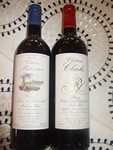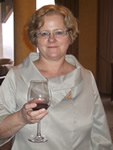While a lot is heard about the two Rothschilds of Bordeaux, namely the first growths Chateaux Lafite and Mouton Rothschild, the Third Front has emerged through estates of Baron Edmond de Rothschild, opening vistas of value premium wines of quality, writes Subhash Arora
 The history of Rothschilds is as fascinating and complex as their first growths, and could perhaps form a subject as interesting for an undergraduate programme in finance as a thesis for a doctoral study. The history of Rothschilds is as fascinating and complex as their first growths, and could perhaps form a subject as interesting for an undergraduate programme in finance as a thesis for a doctoral study.
The Rothschild Wine Dynasty
To an Indian, Rothschild may be one big, powerful, ultra- rich and happy family; like what the world thinks about the Ambani family. Yet, we know that the Ambanis may be big and powerful (history after a century may even follow the Rothschild family pattern), but there is no love lost between the two siblings. The Rothschild story may have similarities, albeit with beginnings going back over two centuries.
The Rothschild story began in the 1760s, when a young Jewish German of modest means, Mayer Amschel Rothschild started dealing in coins and bills in a Jewish ghetto of Frankfurt and became successful. He had five sons who learnt their finance skills from him that would enable them to establish the Rothschild banking business across Europe.
They founded banking houses in Frankfurt, London, Paris, Vienna and Naples. They reached the pinnacle of the banking world. The French branch of the family tree established their presence in the wine world through Baron James de Rothschild and the descendents from the English branch.
1. Baron James Mayer de Rothschild and Chateau Lafite-Rothschild
Baron James Mayer (1798-1868) began to work in France in 1811, forming de Rothschild Frères in 1817. He bought Château Lafite in 1868, a few months before he died. A trusted adviser of ministers and kings, he took the Rothschild business to a leading position in France.
He had three sons, Alphonso (1827-1905), Gustave (1829-1911) and the youngest Edmond James (1845-1934). The control passed on to his son Gustave and then grandson Robert Philippe to Baron Elie (1917-2007) who ran it from 1946-1974.
The property is now being managed by his nephew, Baron Eric de Rothschild.
2. Baron Nathaniel and Chateau Mouton Rothschild
Nathaniel (1812-1870) was the nephew of James Mayer and son of Nathan (1777-1836) who was from the London side of the family. He bought a chateau called Brane-Mouton, 50 kms from Bordeaux city in 1853 and re-named it Chateau Mouton Rothschild.
His great- grandson Barone Philippe (1902-1988) who is remembered for creating labels by the artistes since 1945 was the one who was successful in his efforts to have the chateau upgraded to Premier Grand Cru status, the only change made in the history of 1855 classification of Bordeaux.
The estate is now owned and managed by his daughter Baronne Philippine.
There has been un-paralleled rivalry between the two first growth families, with each trying to outdo the other. Supposedly the entry to the Premier growth of Mouton was opposed by the Lafite side because of the British background. It is widely known that Mouton had been producing the top quality wines worthy of the crown. And possibly deserved to be at the top of the heap.
3. Baron Edmond de Rothschild and Chateau Clarke
The third branch of the Rothschild wine tree was seeded by Baron Edmond (1926-1997), grandson of Edmond Benjamin James Rothschild (1845-1934), and the great-grandson of James Mayer when he began to develop a range of businesses in the 1960s, including real-estate companies and formed La Compagnie Financière Edmond de Rothschild. (LCF Rothschild)
In 1973, Baron Edmond was tipped off about the sale of Chateau Margaux, one of the five first growths. He considered buying it as also Chateau Beychevelle. However, he decided against it as he was very conscious of his cousins' interests at Lafite and Mouton, says his wife Baronne Nadine de Rothschild.
On the advice of the winemaker from Lafite he bought instead Châteaux Clarke in 1973 and then the nearby Malmaison producing Cru Bourgeois wines in Listrac- Médoc and Moulis appellations. He formed Compagnie Vinicole Baron Edmond de Rothschild in 1973 for the wine business.
It was considered a curious decision to buy these properties as they were in a dilapidated condition. However, he renovated and modernised the cellar and was proud of the resulting quality. After his death in 1997, his son Baron Benjamin de Rothschild assumed control of the French vineyards. He collaborated with the Rupert family in Frederiksberg, South Africa and started a joint venture called Rupert Rothschild Vignerons. He also has a project in Argentina on the foothills of the Andes, Clos de los Siete.
In 2003 Benjamin, who manages his wine business with his wife Ariane under the company name, also bought an 86 hA property named Chateau des Laurets, straddling the Puisseguin Montagne St. Emilion and St. Emilion appellations on the Right Bank.
The 46-year old Baron Benjamin is also the Chairman of the multi billion dollar finance and real estate company, LCF Rothschild and has been considered one of the richest people in the Rothschild dynasty. He also owns 22% of Chateau Lafite and has several non-banking, non- wine businesses.
Third Front Chateaux
Since Baron Edmond de Rothschild bought this 53 hA planted estate in 1973, Chateau Clarke has made gigantic progress in quality. The 24 hectares of Chateau Malmaison, located near the Chateau Clarke, have principally planted 67% Merlot and 33% Cabernet Sauvignon. He also the bought the Peyre-Lebade estate nearby.
Chateau Clark is located in the Listrac Medoc Appellation whereas Malmaison is in the adjoining Moulis-en-Medoc, both small appellations by Bordeaux standards.
Including all the Bordeaux properties, the company owns 234 hAs and produces about a million bottles a year. Further investments are on the cards with the active interest taken by his wife Ariane.
Tasting of the Third Front wines
Michelle Rolland, the consultant to Grover Vineyards, Bangalore has been associated with the family since 1999 for all their projects in Bordeaux, South Africa and Argentina since 1999. Since then the wines have become more ripe, richer and bolder and ready to drink young with a good potential to age in the medium term, as one discovered at the tasting conduced by Brindco at the Taj Mahal yesterday. Helene Combabessouse, the Commercial Manager of Compagnie Vinicole Baron Edmond de Rothschild presented three wines.
Baronne Nadine de Rothschild Chateau Malmaison 2002
Malmaison wines have more Merlot than Cabernet unlike the chateaux in Medoc because of the soil as Cabernet does not ripen easily. The blend of 80% Merlot and 20% Cabernet Sauvignon, with ageing of more than 12 months in 30% new oak barrels and 70% in the older barrels should make the tannins ripe. But the dark purple, dense aromatic wine with elegant dark fruit aromas was too tannic and astringent though well structured. Perhaps time spent in the glass or longer decanting would make them mellow. The wine is certainly not for vegetarians; it would do more justice if you are a beef eater.
Baron Edmond de Rothschild Chateau Clarke 2000
Despite the miserly serving of a few drops, the toasty vanilla with black fruits of this dark and thick wine release intense bouquet with smoke and spices in the back layer, and you know you are in for a treat. The flavour does not disappoint. The tannins are mellow and ripe, the blackberries and plums dance on your palate right from the frontal attack and persist for a long time after you have finished with the sip. The harmony and balance in the wine is commendable. Though a serious food wine, the lusciousness makes it easy to sip and enjoy with lamb and possibly even a few chicken dishes with matching marinades or sauces. The smoky flavour would make it a perfect match for any hard and seasoned cheese. Vegetarians will also enjoy if Bordeaux wines are their favourites.
Baron Edmond de Rothschild Chateau Clarke 2004
 The same wine with similar grapes-70% Merlot and 30% Cabernet, but different vintage makes the younger looking wine very perfumed though not as smoky and spicy. The tannins are firm, mouthfeel is full and the berry fruit abounds. The after-taste is also long. The underlying acidity and the ample presence of fruit make it look like it would have a longer life than its 2000 sibling. The same wine with similar grapes-70% Merlot and 30% Cabernet, but different vintage makes the younger looking wine very perfumed though not as smoky and spicy. The tannins are firm, mouthfeel is full and the berry fruit abounds. The after-taste is also long. The underlying acidity and the ample presence of fruit make it look like it would have a longer life than its 2000 sibling.
Although Chateau Clarke is priced 20% higher at the duty free prices as indicated by their distributors- Brindco, Chateau Clarke 2000 seemed to be the best value for money. In any case, the wines which enjoy the Cru Bourgeois status compete well with many of the fourth and fifth growths.
EPILOGUE
It was interesting to learn from Helene that all three wine branches of the Rothschild dynasty have decided to forget the differences that existed due to their ascendants. A new champagne label is being launched at Vinexpo this June through a joint venture in which all three are equal partners.
Ostensibly, the idea came to the distant cousins that the name Rothschild goes well with Champagne and hence the project. Labeled as the Barons de Rothschild NV champagne it will be distributed by another company and perhaps may also spread a message of unity. To be priced at around €25 ex-cellar, it will be more expensive than the ubiquitous Moet et Chandon but selling the 200,000 bottles to be assembled should not be a problem for the families.
Will it also motivate the Ambanis to come up with an Ambani Champagne one day, not in the near future? Too early to tell.
Subhash Arora |